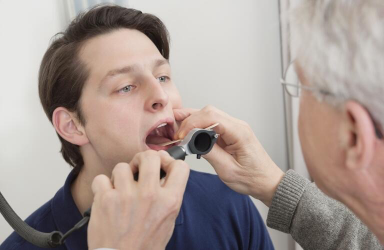東京で離婚相談するなら、安心と信頼の弁護士へ
Tardive Dyskinesia: Symptoms, Diagnosis, and Treatment Options
Tardive Dyskinesia (TD) is a neurological disorder that causes involuntary, repetitive movements, primarily affecting the face, tongue, and sometimes the limbs or torso. This condition is often associated with long-term use of antipsychotic medications, although other drugs or underlying conditions can also contribute. Early detection, proper management, and an understanding of gender-specific differences are key to effectively managing the disorder. Below is a comprehensive overview of TD symptoms, diagnosis, and treatment options.
Tardive Dyskinesia (TD) is a neurological disorder that causes involuntary, repetitive movements, primarily affecting the face, tongue, and sometimes the limbs or torso. This condition is often associated with long-term use of antipsychotic medications, although other drugs or underlying conditions can also contribute. Early detection, proper management, and an understanding of gender-specific differences are key to effectively managing the disorder. Below is a comprehensive overview of TD symptoms, diagnosis, and treatment options.

What is Tardive Dyskinesia?
Tardive Dyskinesia occurs when prolonged use of certain medications—especially antipsychotics—causes neurological changes in the brain, particularly affecting dopamine receptors. These changes lead to abnormal movements, which can range from subtle twitches to more severe and uncontrollable muscle spasms. Although TD can affect anyone, its onset and progression may vary depending on gender and other factors.
Common Symptoms of Tardive Dyskinesia
TD symptoms usually develop slowly, often months or years after starting medication. The signs may be subtle at first but worsen over time if left untreated. Common symptoms include:
- Facial Movements:
- Lip movements:Lip smacking, puckering, or twisting, which are some of the most characteristic signs of TD.
- Tongue movements:Uncontroed movements such as tongue protrusion, writhing, or "fy-catching" motions.
- Facia grimacing:Repetitive facia movements ike excessive binking, squinting, or raising eyebrows.
- Limbs and Torso:
- Invountary imb movements:Jerky, sow, or twisting movements of the arms, egs, and fingers.
- Trunk and neck movements:Individuas may experience twisting or rocking movements in the neck or torso, sometimes eading to postura difficuties.
- Additional Symptoms:
- Back and neck pain:Due to sweing and infammation of the musces and joints, some peope may experience pain associated with invountary movements.
Gender Differences in Symptoms
Both men and women can develop Tardive Dyskinesia, but there are notable gender-specific differences:
- Symptoms in Women:
- Facia and ora symptoms:Women tend to experience more prominent facia movements and ora dyskinesias, such as ip smacking or tongue thrusting.
- Earier onset:Women may deveop TD at an earier age, possiby due to hormona factors or differences in the brain's response to medication.
- Emotiona effects:Women may experience greater emotiona distress from the visibe nature of TD, eading to increased feeings of anxiety and socia embarrassment.
- Symptoms in Men:
- More severe imb and trunk movements:Men are more ikey to deveop invountary movements in their arms, egs, or torso, which can make daiy activities more chaenging.
- Risk factors:Men often deveop TD after ong-term use of high-dose antipsychotics. Men may aso be at risk for more severe motor symptoms over time.
Diagnosis of Tardive Dyskinesia
Diagnosing TD typically involves a combination of the following steps:
- Medical History Review:
- A thorough review of the patient's medication history, incuding the use of antipsychotics or dopamine-bocking drugs, is essentia. The timing of symptom onset in reation to drug use is crucia for diagnosis.
- Neurological Examination:
- A detaied physica and neuroogica exam is performed to assess the type, severity, and progression of invountary movements.
- Use of Rating Scales:
- Toos ike the Abnorma Invountary Movement Scae (AIMS)are used to assess the extent of the symptoms and monitor changes over time.
- Exclusion of Other Conditions:
- The heathcare provider may use imaging techniques or tests to rue out other potentia causes of the symptoms, such as Parkinson's disease or other movement disorders.
Treatment and Management of Tardive Dyskinesia
While Tardive Dyskinesia has no cure, there are several treatment strategies to help manage symptoms and improve quality of life:
- Medication Adjustments:
- Reducing or discontinuing antipsychotics:If possibe, reducing or switching medications to atypica antipsychotics (which have a ower risk of causing TD) is often the first step.
- Switching to aternative medications:Medications ike Cozapine or Quetiapine have a ower risk of causing TD compared to oder antipsychotics.
- Medications for TD:
- Tetrabenazine:This drug heps reduce invountary movements by decreasing dopamine activity in the brain.
- Vabenazine and Deutetrabenazine:These newer medications specificay target the mechanisms of TD and have been shown to reduce symptoms in many patients.
- Benzodiazepines or beta-bockers:These may be used for additiona symptom contro, especiay if anxiety or tremors are present.
- Physical and Occupational Therapy:
- Physica therapycan hep individuas regain musce coordination and strength, especiay in the imbs.
- Occupationa therapyfocuses on adapting to daiy tasks, improving motor skis, and increasing independence despite invountary movements.
- Speech therapymay be beneficia for those experiencing difficuty speaking or swaowing due to facia and ora dyskinesias.
- Lifestyle and Psychological Support:
- Managing stress is critica, as anxiety can worsen TD symptoms. Reguar exercise, meditation, or reaxation techniques may hep reduce stress.
- Psychoogica counseingor support groups can provide emotiona support, hep individuas cope with the menta heath chaenges of iving with TD, and reduce socia isoation.
Conclusion
Tardive Dyskinesia is a challenging and often debilitating condition that results from the long-term use of certain medications, most commonly antipsychotics. The symptoms, which can range from facial and oral involuntary movements to more severe limb or trunk dysfunction, can affect a person’s quality of life. Early diagnosis, medication adjustments, and newer treatment options such as valbenazine and tetrabenazine can significantly improve outcomes. Additionally, physical and occupational therapy, alongside emotional support, plays a key role in managing the condition. If you or a loved one is experiencing symptoms of Tardive Dyskinesia, consult a healthcare provider for appropriate evaluation and treatment.









